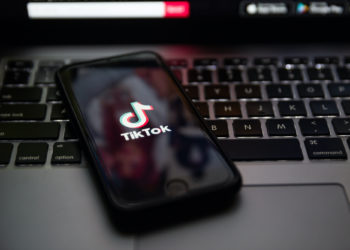
By Wyatt Otto, Content Manager With TikTok growing to become the most popular platform for traditional college students (age 18-22), more colleges are joining the platform to better connect to… Read More – So Your College is on TikTok, Now What?
Blog August 10, 2020

The 2020 presidential election isn’t the only campaign that should be in full swing. With so much on the line with your college’s enrollment, now is the time to pull out all the stops and launch your offensive.
Not sure where to begin? Here are 10 mini campaigns you can pull together now using whatever level of resources you have available. Put together a series of these and you can further leverage your impact on enrollment. Use your data to demonstrate your results along the way, and you’ll also win over your president and other campus leaders, ultimately safeguarding your precious marketing dollars and in-house talent
1. Financial Aid Campaigns
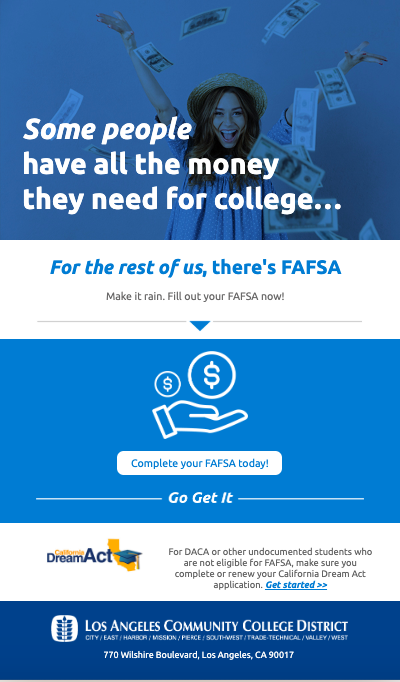
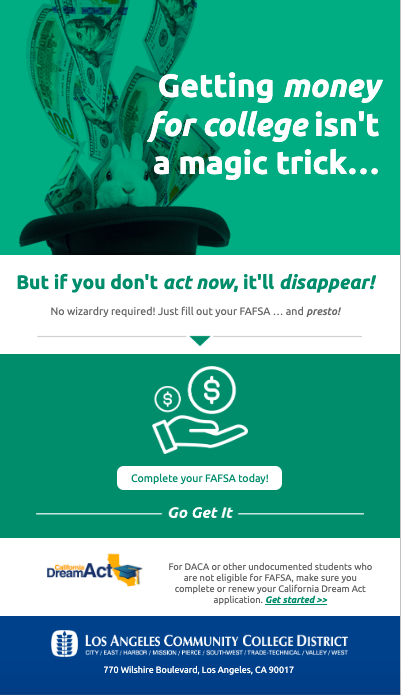
Did you know that students who complete financial aid applications are 82 percent more likely to go straight on to higher ed than their peers who don’t finish the forms? Simply filling out the form significantly increases the chances of success.
With this very goal in mind, the Los Angeles Community College District worked with Interact to develop a financial aid campaign that would motivate students on each of its nine campuses to complete the FAFSA. The campaign worked so well that 182,000 students clicked on the button to complete the FAFSA and the district’s financial aid office received 3,100 calls, prompting their request to end the campaign. A marketer’s dream, right?
2. Equity Campaigns

The role of completing the FAFSA is significant. But what’s even more striking is that students from the lowest income brackets are 127 percent more likely to go straight to college than their peers who don’t complete the FAFSA. Among the most disadvantaged and marginalized populations, the biggest barriers to attending college are the lack of financial support, lack of knowledge about the availability of financial aid and, for those who are aware, self-disqualifying and assuming they will not be eligible for aid.
Considering we’re already facing an equity issue in higher education, educating everyone, especially the most vulnerable, about financial aid is something we need to better address. Marketing plays a critical role in making sure that all populations know you are there, know what you do, and know how you can support them to reach their higher education goals.
3. Mental Health Awareness Campaigns
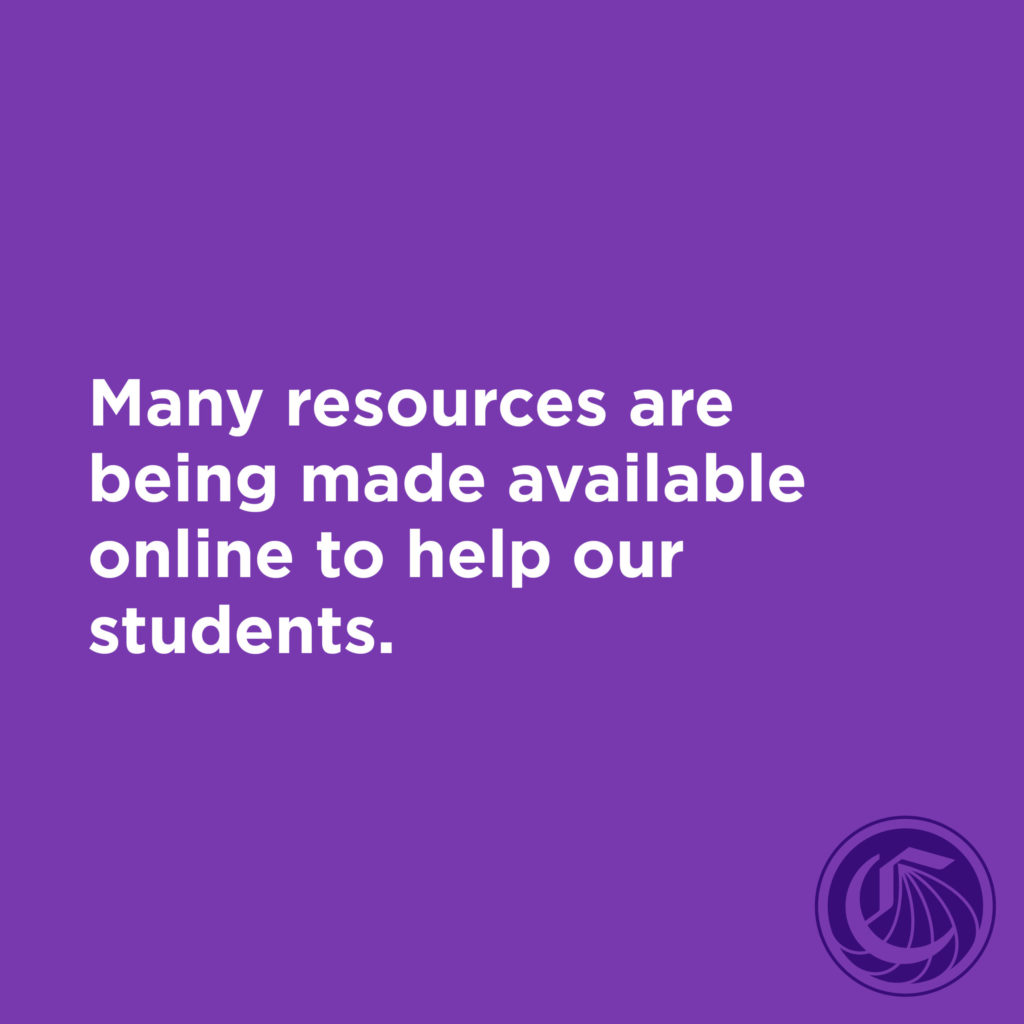
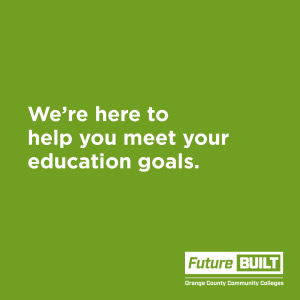
Nationally, around a third of Americans have reported recent symptoms of anxiety and depression since late April. According to the CDC, this trend is even more pronounced among young people, as upward of 46 percent of people ages 18-29 are feeling these mental health strains. Not only is this age group the highest of any group in the CDC survey, but it’s also a core demographic of most community college student populations.
With the pandemic continuing, these stats are not likely to reverse any time soon. Show students you are there for them. Acknowledge that this isn’t an easy time. Use multiple touch points and available media to connect them quickly and often to your support services and community resources. Having constant encouragement and knowing they can turn to you will help them stay on track towards their goals and achieve better health along the way.
4. Retention Campaigns
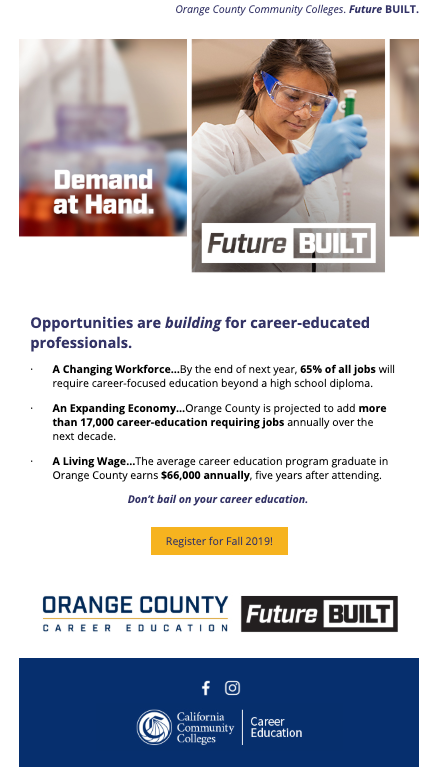
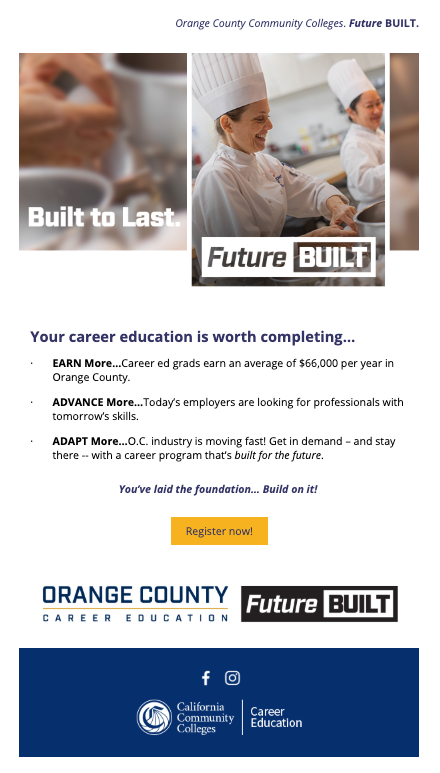
Email is amazing when it comes to retention. Interact’s national Media Prefs data supports this with the high percentage of students who indicate they pay attention to messages of encouragement their colleges email them. The Media Prefs data also shows faculty are your best advocates for helping to retain students.
So, equip your faculty to assist you. Provide them with retention toolkits and email messaging they can easily share with students in their classes, through their student portal, and via email at important moments throughout the semester, especially before midterms and finals. We’ve seen impressive results for colleges that have implemented robust, integrated retention campaigns that include multimedia messaging from marketing, enrollment, and student service areas, and faculty reminding students of how far they’ve come and encouraging them to stay on track to finish what they start.
5. One More Class Campaigns
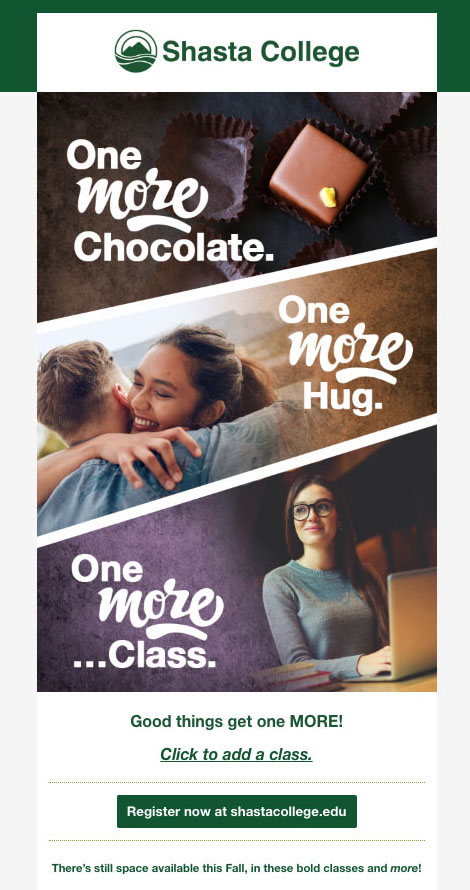
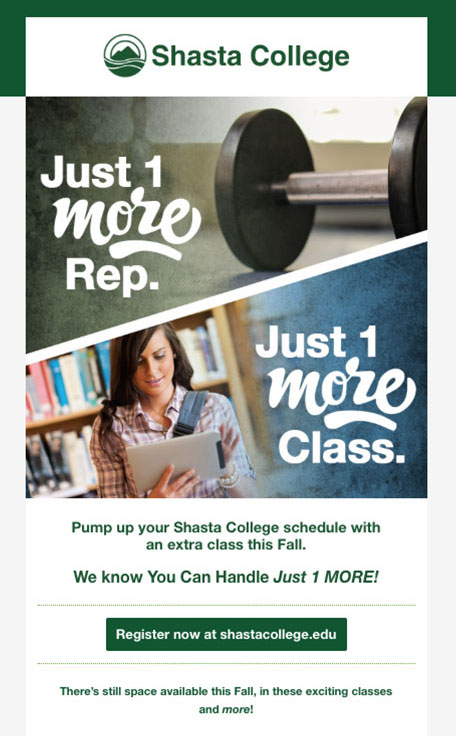
It’s time to convert your part-time students to full-time students—especially those who are already close to full-time status and may have more time available due to the pandemic. You’re sitting on a treasure trove with part-time students. You know who they are. Encourage them to take one more class. Use email and social media to show them how much more likely they are to succeed by just taking one more class.
Based on National Student Clearing House data, half of part-time students (51%) stopped out by the end of year six, nearly two times larger than full-time starters (26%). The stop-out rate has gone up for part-time starters over the past years, while data shows it is down for their full-time counterparts. Your students will benefit from hearing such data. And you will not only improve retention, but also boost student success.
6. Stop-Out Campaigns
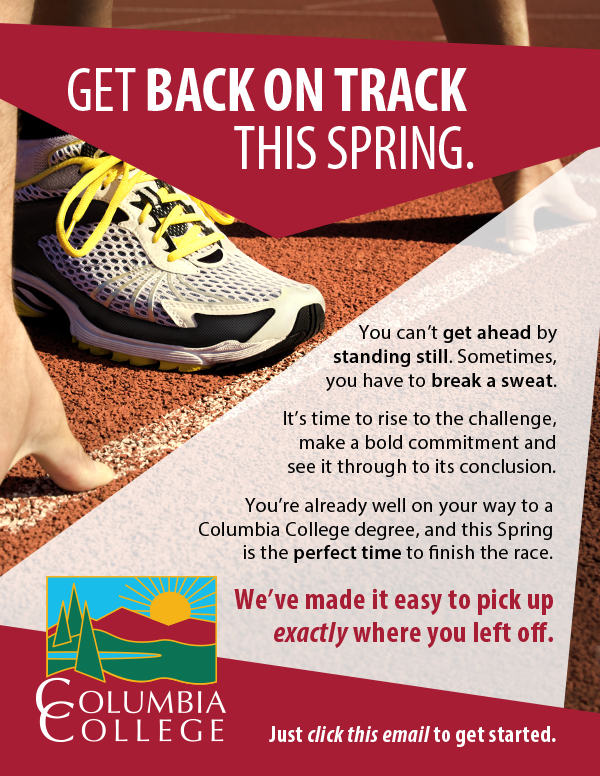
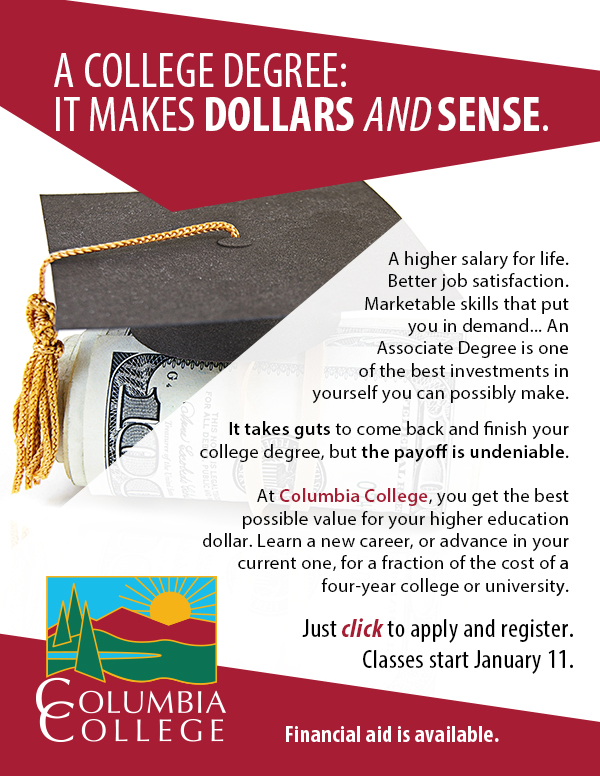
Since we know more students stop out than complete, why not reach out to them and ask them to come back? Go after your students who left before they completed their degree or transferred. They loved you once, they can love you again. You already have them in your database. Tell them they’ve come too far to quit. Remind them of what earning their college degree means…higher earnings, job stability, and better career and transfer options.
An extra bonus, getting more of your students back and to the finish line will also boost completion rates, as many are likely just a semester shy of graduation. If you can partner with your foundation, this may be the opportune moment to secure funding for a completion scholarship that enables those who stopped out within three to nine credits of completion to come back and “finish for free.” Be creative and be bold. Your students deserve it!
7. Career-Focused Campaigns
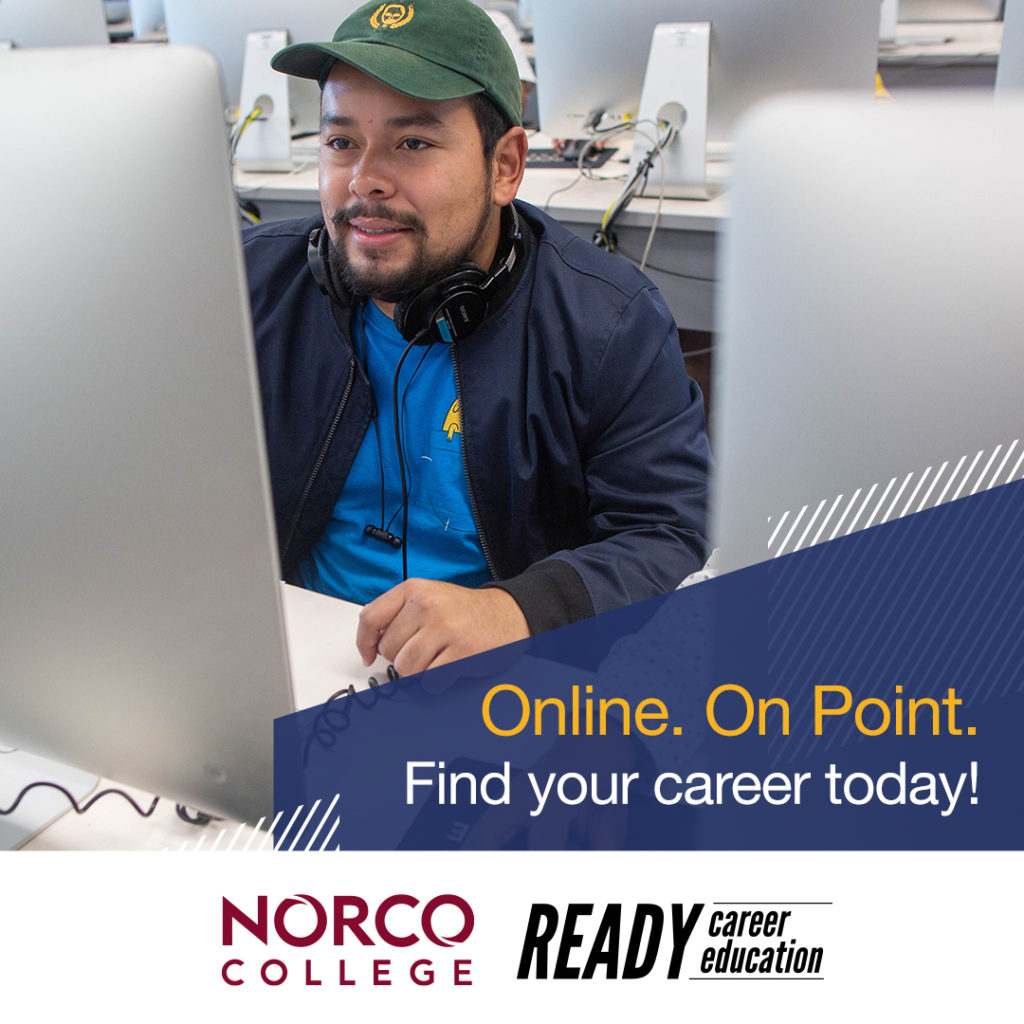
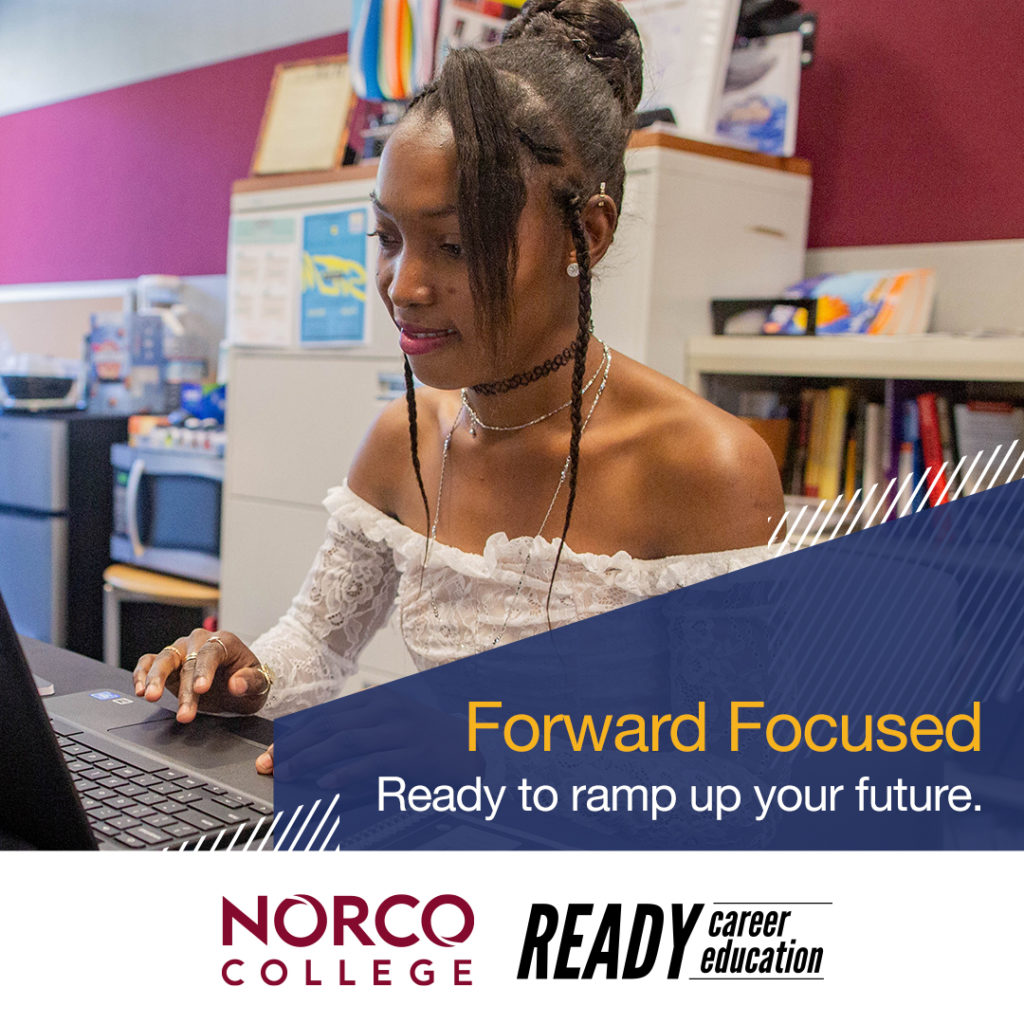
According to a post-COVID-19 article in WIRED magazine, “A lot of people will need more education to get back into the workforce, and they’ll need to get it quickly, at the lowest possible cost, and in subjects directly relevant to available jobs.”
Where can they find all of this? Their local community college, of course!
People need the basics…quickly. Students are looking for stackable credentials and ways to boost their resume and gain entrée into essential career fields in their region. Your career education, short-term training, and apprenticeship programs do just that. Highlight these in a dedicated campaign. Show people what they can complete quickly to gain employment, to be better equipped to work from home, and to possibly earn while they learn. Not only will you be helping individuals get back on their feet, you’ll be reminding your community of how essential you are to their economic recovery.
8. ESL Campaigns

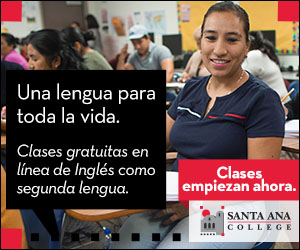

When selling your career-focused programs, many of which are non-credit options, don’t forget about your programs for special populations, including ESL programs. Enrollment trends in primary, secondary, and postsecondary education suggest that the ESL student population is growing.
With just $7,000 to spend on media buys, Interact developed a digital ad campaign for Santa Ana College designed to attract 300 new ESL students. The ads, with versions created in Vietnamese, Chinese, and Spanish, ended up driving 760,000 impressions, 8,200 clicks, and 58,000 YouTube video views, with 790 students signing up for the ESL classes. The college exceeded its goal by 263 percent. Wow! Their ESL campaign is also a good reminder of how important it is to speak with your audiences in their preferred languages.
9. Gap Year Campaigns

Now is the time for you to fill in the gap. According to the Hechinger Report, “Ten percent of high school seniors planning to attend a four-year college or university before the pandemic now say they’re going to do something else. But high school graduates who put off college often end up never going.”
Parents need to hear this warning to save their college-bound students from falling into the “gap year” abyss. You can help their “gap year” kids stay on track with their bachelor’s degree by taking their gen ed credits with you while at home this year. And, even if they weren’t considering “sitting out” a year, why should they spend $30,000 to $50,000 and more for a college life experience that will equate to little more than sitting in Zoom meetings all day? Show them how they can continue earning the credits they need and transfer them seamlessly to their four-year school when ready to return. You have the home court advantage here. Use it!
10. Philanthropy/Development Campaigns

Speaking of home court advantages, that’s something you can also leverage with continued resource development. Now is not the time to put your advancement efforts on hold. People feel frozen, yet they want to move forward. They want to contribute to something that will help them feel as if they are making a difference.
Emotional connections are how people unfreeze. Show them how you are doing that for your community—by serving the front lines, essential careers, and local industries. Give them a way to direct their “action” preference. You have a twofer when it comes to philanthropy campaign messaging. You are lifting individuals who are often left behind, while also enabling your communities to recover.
Make the emotional connection that is the catalyst for most donor relationships. Tell your student success stories that depict grit, resilience, and hope like no other organization can. Give your community the opportunity they want to pay it forward by supporting your students and making people’s lives better.

By Wyatt Otto, Content Manager With TikTok growing to become the most popular platform for traditional college students (age 18-22), more colleges are joining the platform to better connect to… Read More – So Your College is on TikTok, Now What?

We’re all familiar with she/her and he/him pronouns, but there’s a third set of pronouns that we need to become more familiar with, and that’s singular they/them pronouns.

In an interview with Paula Di Dio, Ph.D. in Latin American literature and cultural studies and senior director of communications & research strategist at Interact, we break down how best to communicate with Latino and Hispanic students.
Read More – Writing and Marketing to Latino and Hispanic Students